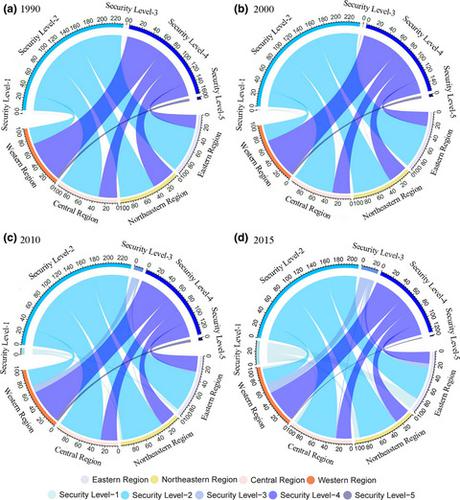当前位置:
X-MOL 学术
›
Food Energy Secur.
›
论文详情
Our official English website, www.x-mol.net, welcomes your
feedback! (Note: you will need to create a separate account there.)
Spatiotemporal changes in the state of food security across mainland China during 1990–2015: A multi-scale analysis
Food and Energy Security ( IF 4.0 ) Pub Date : 2021-07-27 , DOI: 10.1002/fes3.318 Jianmin Qiao 1 , Qian Cao 2 , Zhengtao Zhang 3 , Zhi Cao 4 , Haimeng Liu 4
Food and Energy Security ( IF 4.0 ) Pub Date : 2021-07-27 , DOI: 10.1002/fes3.318 Jianmin Qiao 1 , Qian Cao 2 , Zhengtao Zhang 3 , Zhi Cao 4 , Haimeng Liu 4
Affiliation

|
Food security is closely related to individual livelihood and social stability, and assessing the state of food security is essential for making agricultural policies. Nonetheless multi-scale assessment of national food security state with explicit consideration of availability and access remains to be resolved. In this study, a spatially explicit crop model was used to simulate the production of major crops in China (i.e., wheat, maize, rice, and soybeans). Food production (as simulated by the crop model) and GDP per capita relative to the global average were then used to develop food security indicators to evaluate China's food security levels on grid, provincial, and economic zone scales. The Getis–Ord method was further applied to analyze the spatial aggregation of food security and food insecurity provinces. Results show that food security situation improved in mainland China during 1990–2015, attributed largely to the enhanced purchasing power. On the grid scale, changes in food security state went through two stages: Before 2000, the regions in the eastern part of the Hu Line were food security, while the regions in the western part were food insecurity; after 2000, the state of food security greatly improved from insecurity to security in Northwest China, and the areas of the highest security level considerably increased in eastern China. On the provincial scale, food security state in most provinces improved or almost unchanged over time. Exception was found in coastal provinces, with food security state was greatly affected by urbanization. Food security hot spots were primarily detected in central China, while cold spots were detected in Xinjiang, Qinghai, and Tibet. On the economic zone scale, food security areas in the eastern part decreased during 1990–2010 but increased thereafter, while food security areas in the other three economic zones increased from 1990 to 2015. To ensure food security, China should maintain the arable land areas, improve the quality of farmlands, mobilize farming enthusiasm, and advance agricultural marketization.
更新日期:2021-07-27











































 京公网安备 11010802027423号
京公网安备 11010802027423号